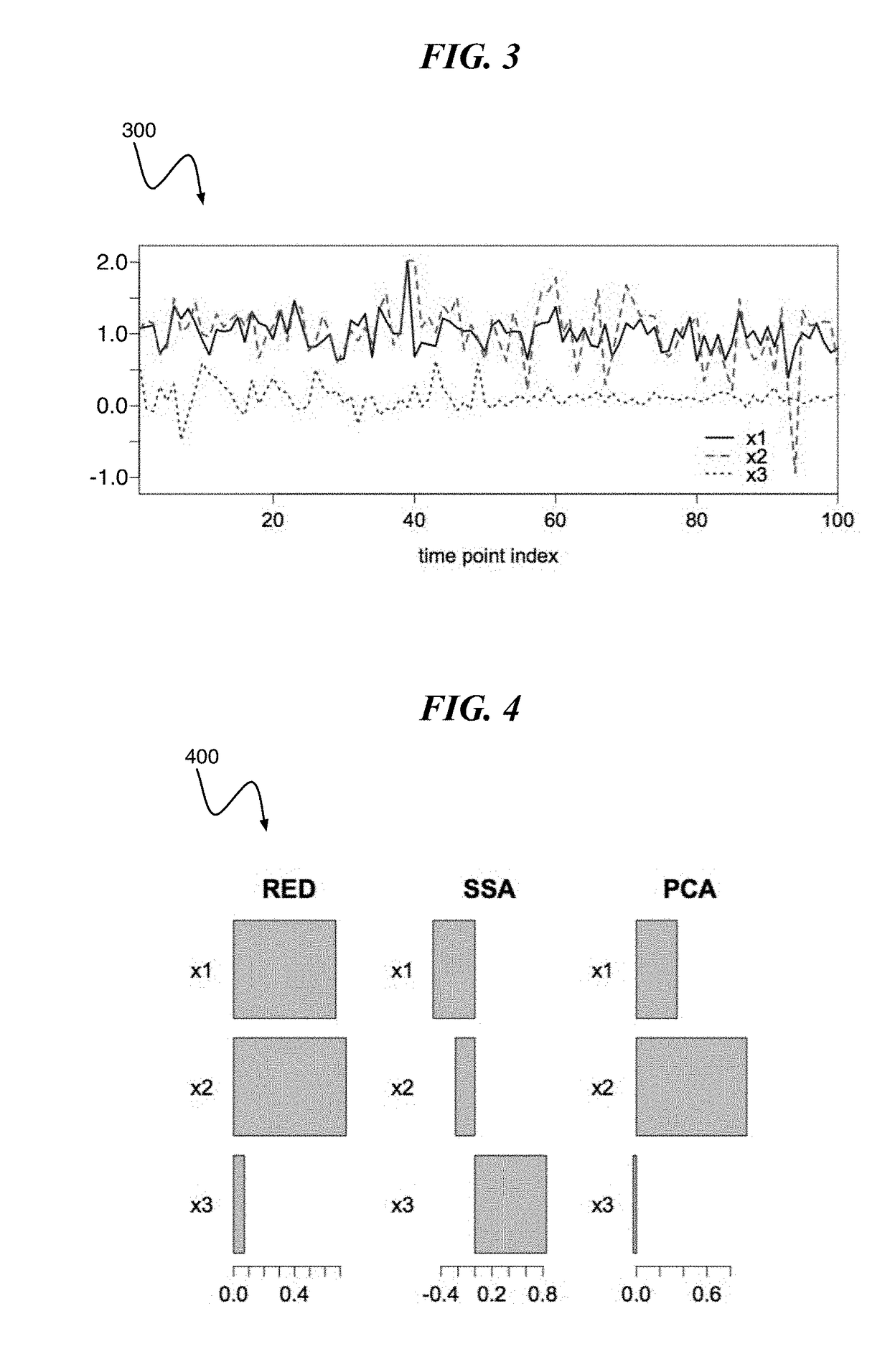Change Detection Using Directional Statistics
a technology of directional statistics and change detection, applied in the direction of machine parts testing, structural/machine measurement, instruments, etc., can solve the problems of lack of interpretability, significant deformation of the performance of direct density-ratio estimation approaches,
- Summary
- Abstract
- Description
- Claims
- Application Information
AI Technical Summary
Benefits of technology
Problems solved by technology
Method used
Image
Examples
Embodiment Construction
[0024]For purposes of the following description, the task of change detection from noisy multivariate time-series data is described. According to an embodiment of the present invention, directional statistics are leveraged as the noise-robust signature of time-series data. According to one or more embodiments of the present invention, a regularized maximum likelihood equation for the von Mises-Fisher distribution is used to capture patterns. The regularized maximum likelihood equation simultaneously learns directional statistics and sample weights to filter out unwanted samples contaminated by the noise. In at least one exemplary embodiment, an optimization problem is reduced to the trust region sub-problem in a certain limit, where global optimality is guaranteed. According to an embodiment of the present invention, a distance measure on the Stiefel manifold is used to evaluate the amount of changes.
[0025]Embodiments of the present invention can be applied to a variety of problems ...
PUM
 Login to View More
Login to View More Abstract
Description
Claims
Application Information
 Login to View More
Login to View More - R&D
- Intellectual Property
- Life Sciences
- Materials
- Tech Scout
- Unparalleled Data Quality
- Higher Quality Content
- 60% Fewer Hallucinations
Browse by: Latest US Patents, China's latest patents, Technical Efficacy Thesaurus, Application Domain, Technology Topic, Popular Technical Reports.
© 2025 PatSnap. All rights reserved.Legal|Privacy policy|Modern Slavery Act Transparency Statement|Sitemap|About US| Contact US: help@patsnap.com



